|

 Up
Up 
 Wright Timeline 1920
to 1929
Wright Timeline 1920
to 1929 
(You
are here.)



  Need
to Need
to
find your
bearings?
Try
these
navigation aids:
If
this is your first
visit, please stop by:
Something
to share?
Please:



|
|
Available in Française, Español, Português, Deutsch, Россию,
中文,
日本, and others.
 o
invention, no scientific discovery, no work of art, no human
endeavor happens in an historical vacuum. There are always other
factors -- cultural, political, personal -- that influence the
outcome of a single event. So it was with the invention of the
airplane. The Wright brothers were born just as the Scientific
Method became a tremendous force for cultural change, and the world
became an increasingly wonderful and terrible place because of it.
When Wilbur and Orville were children, the abacus was the most
advanced mathematical aid, influenza was an often-fatal disease, and
the cannon was the most feared weapon of war. By the time Orville
died, the first computers were just being built, antibiotics had
begun to wipe out disease, and the atomic bomb made war
unthinkable. Many of these advances influenced the development of
the airplane -- and the airplane, in turn, influenced further
advances. o
invention, no scientific discovery, no work of art, no human
endeavor happens in an historical vacuum. There are always other
factors -- cultural, political, personal -- that influence the
outcome of a single event. So it was with the invention of the
airplane. The Wright brothers were born just as the Scientific
Method became a tremendous force for cultural change, and the world
became an increasingly wonderful and terrible place because of it.
When Wilbur and Orville were children, the abacus was the most
advanced mathematical aid, influenza was an often-fatal disease, and
the cannon was the most feared weapon of war. By the time Orville
died, the first computers were just being built, antibiotics had
begun to wipe out disease, and the atomic bomb made war
unthinkable. Many of these advances influenced the development of
the airplane -- and the airplane, in turn, influenced further
advances.
Here is chronology that shows not just the story of the Wright
brothers, but also the world they lived in and the important political,
cultural, and scientific events that loomed large in their lives. Click on the
decade you want to see:
|
 |
Note: For a detailed timeline that shows just the seven
years (1899 to 1905) in which the Wright brothers invented the
airplane, click
HERE.
|
Time
|
The Wright
Story
|
The Bigger
Picture
|
|
1920 |
President Woodrow Wilson
appoints Orville to the National Advisory Committee for Aeronautics (NACA, the
forerunner of NASA). He remains an active participant for the rest of his
life. The first monument to the Wrights' accomplishments is unveiled in Le
Mans, France.
|
 |
The first radio broadcasting stations open in England and
America.
|
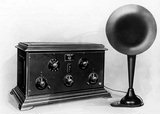 |
|
1921 |
Griffith Brewer delivers a
speech to the Royal Aeronautical Society in London
supporting Orville's claims the the 1903 Langley Aerodrome
was not capable of flight, as the Smithsonian claims it was.
The speech is published and widely distributed in America.
|
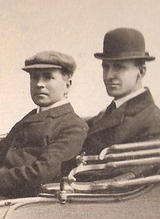 |
Canadian scientists at the
University of Toronto led by Dr. Frederick Banting discover
the hormone Insulin, leading to an effective treatment for
diabetes. Babe Ruth captures the home run record and
16-year-old Margaret Gorman becomes the first "Miss
America." |
 |
|
1922 |
Orville and Katharine christen
a flying boat Wilbur Wright. The aeroboat belongs to
the Wright Aeronautical Corporation, the fourth
reincarnation of the original Wright Company. A New York
Times poll lists Orville as one of the 12 greatest
living Americans.
|
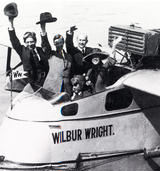 |
The first fatal mid-air collision
occurs over France. The Ottoman empire, which had begun in
1299 and once ruled parts of Europe, Asia, and Africa, ends
and modern Turkey is established.
|
 |
|
1923 |
Orville designs an action toy
that launches a clown at a whirling trapeze. Called "Flips &
Flops," it's manufactured by the Miami Specialty Company for
several years. |
 |
U.S. Army Lieutenants John
MacReady and Oakley Kelly make the first non-stop
transcontinental flight, flying across America in 26 hours. |
 |
|
1924 |
Working with James Jacobs, Orville develops
and patents the split flap, used to slow
airplanes in a steep dive. The Navy pronounces it useless, but later it becomes an important component of "dive bombers"
in World War II. It is his last aeronautical patent.
|
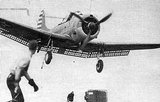 |
The U.S. Navy sends four Douglas "World Cruisers" on a
flight around the world. Two aircraft complete the flight, returning
in 175 days.
|
 |
|
1925 |
Orville issues a statement
disputing the Smithsonian's insistence that the 1903 Langley
Aerodrome was the first airplane capable of flight and
threatens to give the 1903 Flyer to a London museum if the
Smith does not recant. Smithsonian Secretary Charles Abbott
refuses to budge.
|
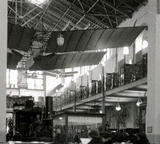 |
John L. Baird transmits the first television images and
Edwin Hubble proves that the Milky Way is only one galaxy
among many that make up the universe.
|
 |
|
1926 |
Orville's sister
Katharine marries Henry J. Haskell and moves to Kansas City
against Orville's wishes. Orville serves on the
board of the Guggenheim Fund for the Promotion of
Aeronautics, an organization that promotes advances in
aviation safety, navigation, and instrumentation.
|
 |
Walt Disney Studios organizes to create animated cartoons, NACA begins to license airplanes and pilots. Richard Byrd
flies over the North Pole. |
 |
|
1927 |
President Calvin Coolidge signs
an act to construct a monument to the Wright brothers on the
Kill Devil Hills near Kitty Hawk, North Carolina.
|
 |
Charles Lindbergh flies non-stop from New York to Paris
in The Spirit of St. Louis and The Jazz Singer is the first
full-length motion picture to incorporate sound.
|
 |
|
1928 |
Orville Wright makes good on
his threat and sends the 1903
Flyer I to the Science Museum of London in England,
calling public attention to his ongoing disagreement with
the Smithsonian.
|
 |
Alexander Flemming discovers
penicillin, an antibiotic
shown to be effective against several serious
diseases.. Amelia Earhart becomes the
first woman to fly across the Atlantic.
|
 |
|
1929 |
Katharine Wright Haskell, Orville's sister,
dies of pneumonia in Kansas City. Orville takes her body
back to Dayton to bury next to Wilbur.
|
 |
The stock market plunges, starting the "Great
Depression," a worldwide economic crisis.
|
 |
|
|
|
|